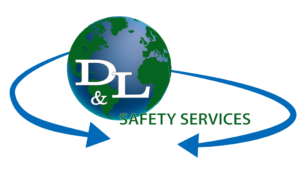
HAZWOPER 40-Hour and 8-hour Refresher training
The 40-hour, in-depth course satisfies training requirements of 29 CFR 1910.120, which requires workers to complete HAZWOPER training before working at an uncontrolled hazardous waste operation. The 40 and 8-hour courses prepare clean-up and emergency response workers to operate safely during a variety of scenarios involving hazardous substances. These courses also cover policies, practices, and procedures to reduce the risk of injury and illness related to harmful exposers on worksites.
NFPA 70E Training
This training is required for workers exposed to major electrical hazards. The training helps workers avoid workplace injuries and fatalities due to shock, electrocution, arc flash & arc blast in compliance with 1910 Subpart S and 1926 Subpart K.


NFPA 70E Training
This training is required for workers exposed to major electrical hazards. The training helps workers avoid workplace injuries and fatalities due to shock, electrocution, arc flash & arc blast in compliance with 1910 Subpart S and 1926 Subpart K.
Confined Space Training
This training stresses the protection of workers entering and working around a confined space. Topics covered in the training include how to identify a confined space and determine if it is a “permit-required” space, understanding the responsibilities of those working in and around a confined space, and understanding rescue and emergency service requirements.


Confined Space Training
This training stresses the protection of workers entering and working around a confined space. Topics covered in the training include how to identify a confined space and determine if it is a “permit-required” space, understanding the responsibilities of those working in and around a confined space, and understanding rescue and emergency service requirements.

Scaffold Training
The training is to help scaffold workers recognize types of scaffold hazards and understand the procedures to minimize those hazards in accordance with 1926.454. Workers are instructed on how to recognize different types of scaffold, how to erect, disassemble, move, operate, repair, maintain and inspect scaffold, to know the max load-carrying on the scaffolds on which they work, and to recognize hazards in the work area.
Norfolk Southern Roadway Worker Protection Training
This training is specific to workers and contractors of the Norfolk Southern Railway System and is designed to protect roadway workers from being struck by moving locomotives, cars, and roadway maintenance machines. These training courses are designed to prevent accidents and casualties caused by collisions between roadway maintenance machines and moving locomotives, car, and/or other maintenance machines.
Fall Protection Training
Falls are considered one of the leading causes of occupational deaths and traumatic injuries, and one of the most frequently cited OSHA violations. This training helps students identify fall hazards and how to best protect workers by preventing these hazards in the construction industry. The training also covers fall protection systems and safety equipment inspection procedures.


Fall Protection Training
Falls are considered one of the leading causes of occupational deaths and traumatic injuries, and one of the most frequently cited OSHA violations. This training helps students identify fall hazards and how to best protect workers by preventing these hazards in the construction industry. The training also covers fall protection systems and safety equipment inspection procedures.
Hazard Communication Training
This training meets the education requirements of 29 CFR 1910.200 and 29 CFR 1926-59 of the Hazard Communication Standard. It also meets the annual education requirements of the TN Hazardous Chemical Right-to-Know Law. In addition to completing this training, you must review your company’s Hazard Communication program, chemical inventory list, and safety data sheets.
Rigging and Signal Person Training
This training qualifies workers as rigging/signal persons according to OSHA crane standards, improving skills, knowledge, and safety consciousness in those workers. The training covers proper use of ANSI hand signals, proper rigging techniques, sling selection, mathematical calculations, wire rope, and chain design, rigging component identification, working near power lines, crane characteristics, dynamics, limitations, and voice signals.
